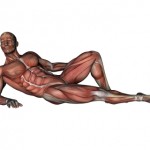Have you ever felt as though your body didn’t really belong to you? Perhaps you became ill and it seemed like your body betrayed the will of your mind. Or, you may have felt some level of dissatisfaction with your appearance. Maybe you were in a stressful situation and you reached a level of anxiety that feels, literally, as though you are “out of body”. All of the above experiences can be seen as examples of disharmony between the physical body and the mind. In a real sense our bodies have an ongoing, dynamic relationship to our minds, but that relationship is not always comfortable. Communication is not always optimal. Consider, for example, that we may want to stay up all night drinking, eating, and generally “partying”. At some point in the evening, we may get a signal from our body that it is tired and needs sleep. We ignore that signal. Guess what? We get sick. Communication breakdown, pure and simple. Runaway anxiety and the shameful flush of poor self -image could also be seen as a communication breakdown when you think about it. Consider the possibility that such “bodily” signals are the communication that feelings exist which need to be attended to. The question is, what is our body trying to tell us?
So, what do I mean by “what is our body trying to tell us?” Does the body actually…..speak?
Oh yes it does, claims New York psychotherapist and spiritual teacher Judith Blackstone. Dr. Blackstone argues that our body and all of its many systems and organs has an intelligence…or many intelligences. In order for us to really “feel” and “understand” body communications we need to learn to “attune” ourselves more deliberately and consciously to our body. The goal of this attunement is to confidently inhabit our own body and live comfortably within our own skin. Only then can we feel “at one” with ourselves…and not as though we are separate beings observing ourselves from the outside. Said another way, the goal of this attunement is to be fully “present” to ourselves. Incidentally, becoming present to ourselves is the first step to being present to others, but that is another blog!
So, how do we do this?…How do we “tune in” to ourselves at this basic “body” level? One answer lies in a simple practice borrowed from mindfulness meditation, called the “body scan”. Here are the steps:
- Find a quiet place, free of distractions, and assume a pose that is comfortable for you. Your eyes are closed and you are lying down, or partially reclined…at least.
- Starting with the toes of your feet and moving up your body incrementally, put your attention on one body part at a time. Ask yourself, how does it feel from the inside out?….feet warm?, cold? Itchy?
- The object is to truly enter into the consciousness of each body part and spend some time seeing how it feels. Let your body speak to you!
The ideal thing would be to do this practice several times a week to get to know the smallest communications you are receiving from your body. Don’t hesitate to enter into dialoug with your body part if necessary. How are you today?…sorry about that fall yesterday! The Buddhist teacher Adyashanti recommends that you prepare your body for an upcoming operation by reassuring it, for example, that the surgeon will be cutting….but it’s a good cut…not meant to hurt you.
So, next time your body goes through some kind of trauma, say some soothing words! Do the same thing if you are having an anxiety attack, or a rush of embarrassment. Build a relationship! Make friends! Taking time to tune into your body on a regular basis will yield incredible benefits.




